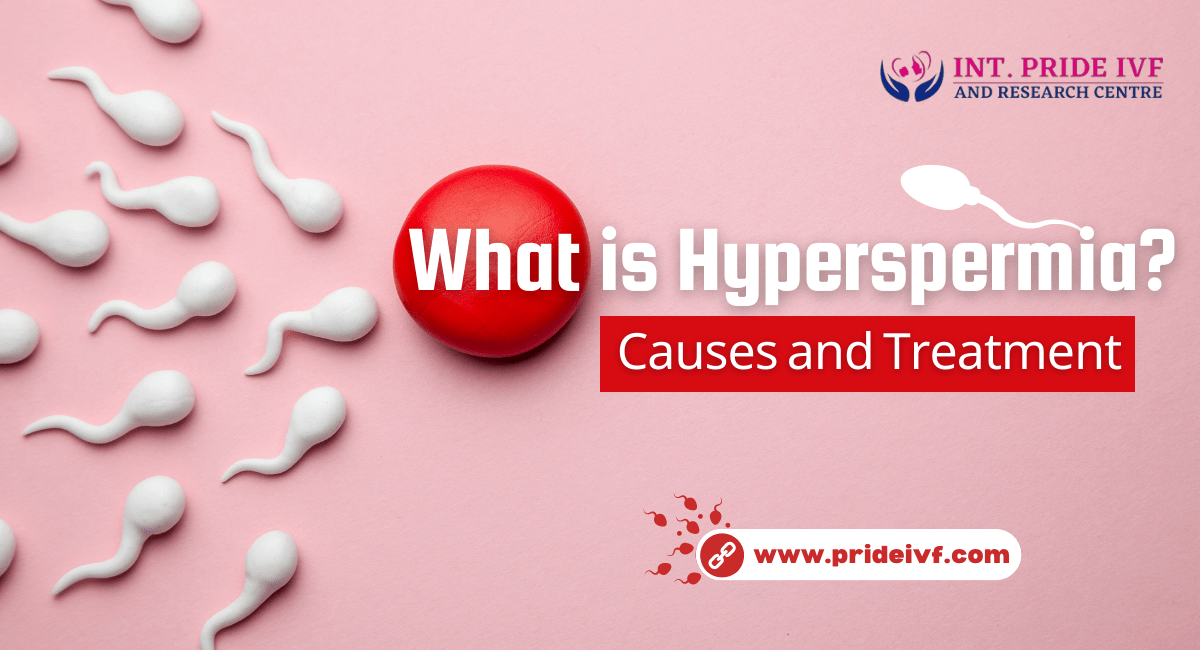Oligo Asthenospermia is a condition characterized by low sperm count (oligospermia) and poor sperm motility (asthenospermia). It significantly impacts male fertility, making it crucial to understand and address.
#Addressing Oligo Asthenospermia is vital for couples trying to conceive, as it is a leading cause of male infertility. Infertility can have emotional, psychological, and relational consequences, making timely intervention essential for the well-being of affected individuals and their partners.
This article will delve into the definition, causes, symptoms, diagnosis, and treatment options for Oligo Asthenospermia. It aims to provide a comprehensive overview to help individuals and couples navigate this challenging fertility issue effectively.




Understanding Oligo Asthenospermia
Oligo Asthenospermia is a male fertility disorder characterized by two key factors: low sperm count (oligospermia) and poor sperm motility (asthenospermia). Sperm count refers to the number of sperm present in a semen sample, and motility indicates the ability of sperm to swim effectively. When a man has both low sperm count and poor sperm motility, it significantly reduces the chances of successfully fertilizing an egg, leading to difficulties in conception.
Oligo Asthenospermia, which can be described as a condition contributing to male infertility (infertility refers to the inability to conceive naturally), is not uncommon and impacts a significant portion of the male population. According to available statistics, it stands out as one of the primary causes of male infertility, accounting for approximately 10-15% of infertility cases globally. The prevalence of Oligo Asthenospermia may vary depending on factors such as geographic location and lifestyle choices, but it consistently remains a prevalent concern for many couples endeavoring to start a family.
It’s essential to differentiate Oligo Asthenospermia from other male fertility issues like azoospermia (absence of sperm in semen), teratozoospermia (abnormal sperm morphology), and erectile dysfunction. Each condition has distinct causes and treatment approaches, making an accurate diagnosis crucial for tailored and effective fertility management. Understanding these differences is vital for individuals seeking solutions to their fertility challenges.
Causes of Oligo Asthenospermia
Some of the causes of oligo asthenospermia are:
Genetic Factors
Oligo Asthenospermia can be influenced by genetic factors. Specific genetic mutations or variations may affect sperm production, quality, and motility. Conditions such as Klinefelter syndrome, Y-chromosome microdeletions, or chromosomal abnormalities can contribute to this condition.
Lifestyle Factors
Poor dietary choices and inadequate nutrition can impact sperm health. A diet lacking essential nutrients like antioxidants, vitamins, and minerals can lead to suboptimal sperm production and function. One need to include those food to increase sperm count suggested by the experts.
Smoking and excessive alcohol consumption have been linked to reduced sperm count and motility. They can also increase the production of abnormal sperm, further hindering fertility.
A sedentary lifestyle, characterized by a lack of physical activity, can negatively affect sperm quality. Regular exercise for infertility can help maintain healthy sperm production.
Medical Conditions
Varicocele is a common medical condition characterized by the swelling of veins in the scrotum. It can lead to elevated testicular temperature, impairing sperm production and motility.
Infections of the reproductive tract, such as epididymitis or sexually transmitted infections, can damage sperm and affect their ability to move effectively.
Hormonal imbalances, including low testosterone levels, can disrupt the normal processes of sperm production and maturation.
Physical abnormalities in the reproductive organs, such as blocked ejaculatory ducts or congenital malformations, can obstruct the release of sperm during ejaculation. You can visit Pride IVF Centre in Delhi to consult a healthcare professional for a thorough evaluation of addressing this condition effectively.
Environmental Factors
Exposure to environmental toxins like pesticides, heavy metals, or industrial chemicals can harm sperm production and quality. Prolonged exposure to high temperatures, such as in hot tubs or saunas, can negatively affect sperm motility.
Symptoms of Oligo Asthenospermia
Some of the prevalent symptoms of oligo asthenospermia are:
Reduced Fertility
One of the primary symptoms of Oligo Asthenospermia is reduced fertility. The combination of low sperm count and poor sperm motility significantly decreases the likelihood of successfully fertilizing an egg during natural conception. Couples may experience prolonged periods of trying to conceive without success.
Difficulty Conceiving
Couples trying to have a baby often encounter challenges when one partner has Oligo Asthenospermia. The difficulty in achieving pregnancy can be emotionally distressing and lead to frustration and anxiety. It may necessitate the need for assisted reproductive technologies like in vitro fertilization (IVF) or intrauterine insemination (IUI).
Psychological Impact
Oligo Asthenospermia can take a toll on the psychological well-being of both partners. Men with this condition may experience feelings of inadequacy and stress. Their partners may grapple with feelings of guilt or blame, even though infertility is rarely the result of one person’s actions. This emotional burden can strain relationships and lead to depression or anxiety.
Other Associated Symptoms
Oligo Asthenospermia itself may not manifest in physical symptoms, but it can be associated with other underlying conditions or symptoms, such as testicular pain or discomfort in cases of varicocele. Additionally, the stress and emotional impact of infertility may lead to disrupted sleep patterns, decreased libido, and reduced overall quality of life for affected individuals and couples.
Treatment Options for Oligo Asthenospermia
Some of the asthenospermia treatment options are:
Lifestyle Modifications
Some of the lifestyle modifications that can help you are:
Diet and Exercise: Improving diet and incorporating regular exercise can have a positive impact on sperm health. A balanced diet rich in antioxidants, vitamins, and minerals can enhance sperm production and motility. Maintaining a healthy weight and engaging in moderate physical activity can also support overall reproductive function.
Smoking and Alcohol Cessation: Quitting smoking and limiting alcohol intake is crucial for addressing Oligo Asthenospermia. These habits can harm sperm quality and quantity. Smoking cessation and reducing alcohol consumption can lead to improvements in sperm parameters.
Lets get started
Medications
Medications that can help you are:
Hormone Therapy: Hormone treatments, such as clomiphene citrate or gonadotropin injections, may be prescribed to address hormonal imbalances affecting sperm production. These medications can stimulate the testes to produce more sperm.
Antibiotics: If an underlying infection is contributing to Oligo Asthenospermia, antibiotics can effectively treat the infection and potentially improve sperm quality.
Surgical Interventions
Few surgical interventions which one can go through in extreme cases are:
Varicocelectomy: Varicocelectomy is a surgical procedure to repair varicoceles, which are swollen veins in the scrotum. By correcting this condition, blood flow to the testes is improved, potentially enhancing sperm production and motility.
Vasectomy Reversal: One of the treatment options for male infertility for those who have undergone a vasectomy but now wish to father children again, vasectomy reversal surgery may be an option. This procedure reconnects the vas deferens, allowing sperm to be ejaculated again. You can visit Pride IVF Center to consult a fertility specialist. It is crucial to determine the most suitable approach for improving sperm quality and increasing the chances of conception.
Assisted Reproductive Techniques (ART)
Assisted Reproductive Techniques (ART) are various techniques and procedures used to assist individuals and couples in achieving pregnancy when natural conception is challenging or not possible. ART methods include:
Intrauterine Insemination (IUI): IUI involves placing washed and concentrated sperm directly into the uterus during the woman’s fertile period. This procedure can bypass sperm motility issues and increase the chances of successful fertilization.
In vitro Fertilization (IVF): IVF is a more advanced ART method where sperm and eggs are combined in a laboratory dish, and the resulting embryos are transferred to the woman’s uterus. IVF is highly effective for couples facing severe Oligo Asthenospermia.
Alternative and Complementary Therapies
Some individuals explore alternative therapies like acupuncture, herbal supplements, or lifestyle practices such as stress reduction techniques to complement medical treatments. While these options may offer some benefits, they should be discussed with a healthcare provider and used in conjunction with evidence-based treatments.
Conclusion
Oligo Asthenospermia, characterized by low sperm count and poor motility, poses significant challenges to couples trying to conceive. This article has explored its causes, symptoms, diagnosis, and treatment options. Timely recognition of Oligo Asthenospermia is paramount. Early diagnosis allows for prompt intervention, increasing the chances of successful treatment and conception. Couples should not delay seeking medical advice if fertility issues arise.
You can visit Pride IVF Center to consult a healthcare professional as the first step towards addressing Oligo Asthenospermia. Specialists like Dr. Nidhi Sharma can provide tailored solutions and emotional support throughout the journey. Despite the challenges, there is hope. Advances in medical treatments and assisted reproductive techniques offer promising prospects for individuals and couples facing this condition, making the dream of starting a family achievable.
FAQs
How can one’s occupation or workplace environment potentially contribute to Oligo Asthenospermia, and what preventive measures can be taken?
Certain occupations and workplace environments, like those with prolonged exposure to heat, radiation, or chemicals, can contribute to Oligo Asthenospermia. Preventive measures include wearing protective gear and taking regular breaks to minimize exposure.
What role does age play in Oligo Asthenospermia, and are there age-related factors that can affect its severity?
Age can impact Oligo Asthenospermia as sperm quality tends to decline with age. Older men may experience more severe cases. Age-related factors can include hormonal changes and genetic influences.
Is there a recommended timeframe for couples to pursue treatment for OligoAsthenospermia before exploring assisted reproductive techniques like IVF or IUI?
There is no fixed timeframe, but early diagnosis and treatment for Oligo Asthenospermia are advisable. Couples should consider treatment options based on their specific situation, but seeking medical advice sooner can improve outcomes, potentially reducing the need for advanced techniques like IVF or IUI.




